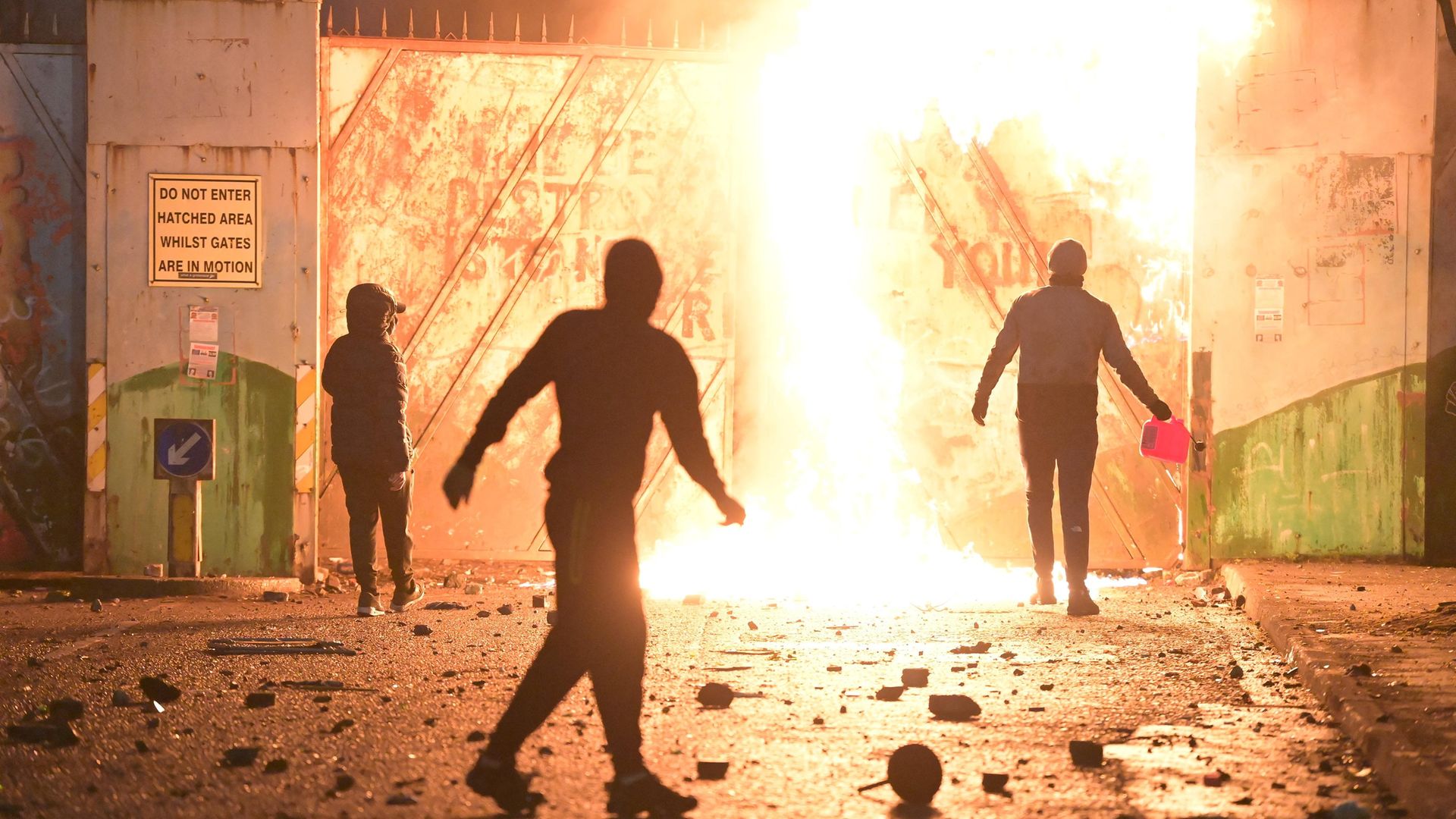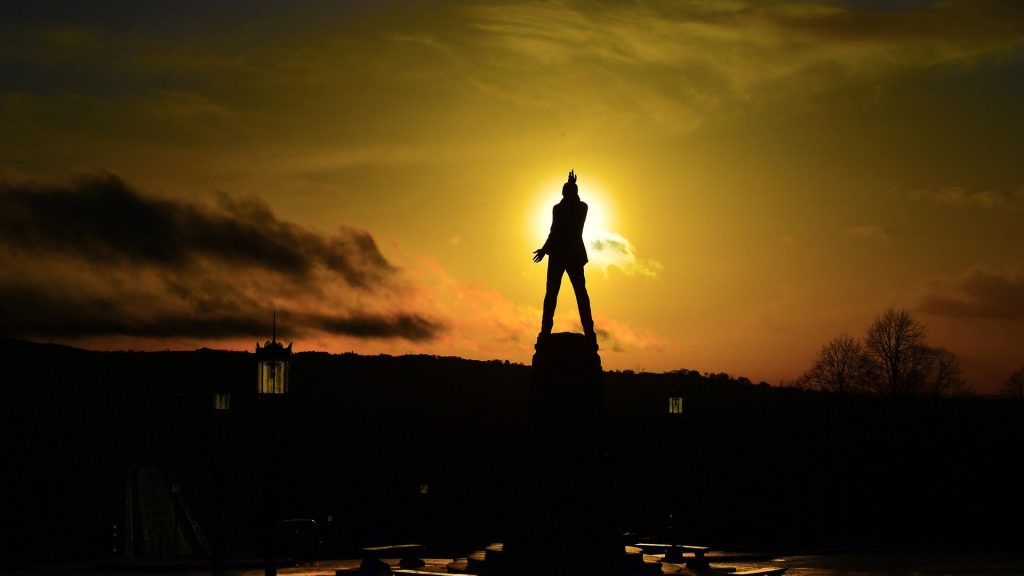
Misunderstood and mischaracterised by the rest of the UK, the plight of Northern Ireland’s Unionists, trapped between London and Dublin, is a melancholic one
The Unionist identity in Northern Ireland has always been a difficult one for outsiders to understand.
The stock images that travel so reliably abroad – of towering bonfires and Orangemen in bowler hats on the Twelfth of July – seem archaic and surreal to external observers.
What do these people want or expect from a mainland UK that often seems so much less interested in them than they are in it?
Observers often do not – or perhaps do not wish to – understand that Unionism comes in many varieties, not all topped off with a bowler or a Union Jack.
They range from the vociferous expressions of identity associated with grass-roots loyalism, to a liberal Unionism which dislikes sectarianism and defines its Britishness in broader terms. But the noisier versions – once epitomised by the late Democratic Unionist Party (DUP) leader Ian Paisley, and his thunderous denunciations of Catholicism in the 1970s and 1980s – have generally held a greater attraction for the cameras than the quieter kind. That has done the international image of Unionism little service.
One thing, however, currently unites all strands: a strong dislike of the Northern Ireland Protocol, the post-Brexit innovation which places a customs border in the Irish Sea between Northern Ireland and the rest of the United Kingdom.
Boris Johnson agreed to a sea border after he found himself waggling on a hook during Brexit negotiations, and decided to cut a piece out of the UK in order to escape it. He had previously given strong assurances that he would do no such thing. During a visit to Northern Ireland last August, Johnson told worried Unionists, with characteristic dramatic élan: “There will be no border down the Irish Sea – over my dead body.”
Well, the sea border is up and running, and Johnson is very much alive. The new arrangements – which some MPs have accused the EU of enforcing with unnecessary rigidity – inconvenience all citizens of Northern Ireland, unionist and nationalist.
Few enjoy the fact that their choice of goods is now restricted because many British suppliers, bamboozled by red tape, have simply stopped selling to Northern Ireland.
Nor do they relish the ruling that any products containing British soil – such as nursery plants – are banned, or that dog or cat owners will now need pet passports to bring their animals home from holidays in the rest of the UK. Living in London, I can no longer send a bunch of flowers via Marks & Spencer to my parents in Belfast.
The cumulative effect of such changes is to reinforce a sense of a United Kingdom that no longer naturally and seamlessly includes Northern Ireland.
Such changes are, of course, most psychologically jarring to the Unionist population in Northern Ireland, which values the British link most highly.
The DUP had backed Brexit, but not this kind. (The Ulster Unionist Party, UUP, supported Remain.) The British government’s agreement to the Protocol is perhaps the most glaring evidence to date of London’s indifference to Unionist feeling.
It comes at an unfortunately symbolic time: the imminent centenary of the creation of Northern Ireland, on May 3, 1921, following the act which brought in the partition of Ireland.
Northern Ireland has now come through the violent Troubles of the late 20th century and more than 20 years of an unsettled ‘peace’. But a hundred years after its inception it is in a politically divided and anxious place.
The parties that support a united Ireland, Sinn Fein and the more moderate SDLP, have refused to join in Northern Ireland Office centenary celebrations, arguing that Catholics were long marginalised in a Unionist-dominated state. The two main Unionist parties, the DUP and the more centrist UUP, are reeling at the groundswell of anger within Unionism at the Protocol.
The loyalist paramilitaries are restless, heavily linked to criminality, and dispensing increasing numbers of threats. Young rioters under their influence in working class Protestant areas have been attacking police with missiles and petrol bombs, inflamed by the recent decision of the public prosecutor not to press charges against 24 Sinn Fein politicians for breaking Covid restrictions at a leading IRA man’s funeral. And there is much discussion of a changing demographic in Northern Ireland which, in the event of a border poll, might tip over to a narrow majority in favour of a United Ireland.
If the relationship between Ulster Unionists and the rest of the UK is understood as a political marriage, then it is one that has long placed Unionists on uncertain ground, where their affection feels unrequited.
In 1985, Unionists protested in huge numbers against the Anglo-Irish Agreement, which first gave the Republic of Ireland a role in the governance of Northern Ireland. Their unhappiness was ignored. The Downing Street Declaration of 1993 announced that Britain had “no selfish strategic or economic interest in Northern Ireland”. For Unionists, it was the equivalent of being coolly informed by a spouse that it was immaterial whether or not they carried on living in the family home.
The Unionist reverence for the symbols of Britishness – such as the Royal family, the Union flag and the national anthem – has long been regarded as embarrassingly overstated in London circles.
Yet Johnson’s government now seems unusually determined to revive precisely such national pageantry, and has issued guidance that the Union flag should be flown constantly from government buildings. It has decreed one exception, however: government buildings in Northern Ireland.
The fondness that Unionists have for commemorating the First and Second World Wars is no coincidence. These were intervals when they could demonstrate loyalty to a kingdom united against a serious external threat, and the ambivalence of the British government towards them briefly flickered into gratitude.
After the Second World War – during which the Blitz came with ferocity to Belfast – Winston Churchill praised “loyal Ulster” for keeping the sea lanes open between Britain and North America (he had previously failed in his attempt to guarantee a future united Ireland to the then Taoiseach Eamon de Valera in exchange for the use of three Irish ports).
But in the long post-war period there has been a steady diminishing of cultural confidence among Northern Irish Protestants or Unionists (and the two are not automatically synonymous, although they broadly overlap: some Protestants have sought to evade the perpetual ‘border question’).
Many Unionists have drifted towards reticence, resignation or rage. Working class Protestant communities, menaced by loyalist paramilitaries, often appear to have shrunk their own sense of possibility: Protestant working class boys have the worst educational outcome in Northern Ireland.
Yet the complicated history of Northern Ireland’s Protestants has produced much more than sectarian slogans and flag-waving: it includes an earlier tradition of radical Presbyterian dissent, of trade unionism, of technical ingenuity and industry in shipyards and mills, of layered identities in writers such as CS Lewis, Louis MacNeice, John Hewitt and WR Rodgers, along with a growing number of contemporary authors and poets.
One can sense, now, an expanding interest in exploring and rediscovering what it means to be a Northern Protestant, a way of liberating the cultural heritage from the political cul-de-sac which it currently inhabits. If so, it cannot come soon enough.
On the political front, however, if Unionists imagined that there was some residual loyalty to them in the upper echelons of the Conservative and Unionist party, they have just paid a high price for that delusion.
Many in Arlene Foster’s DUP may now be regretting their failure to back Theresa May’s earlier deal, which at least took steps to avoid splitting the UK with a sea border. They are not the first to be seduced and abandoned by Johnson, perhaps, but in this case he has left even more smoking chaos behind him than usual.
This might not matter so much, if the post-Agreement years had seen greater reconciliation between the two communities in Northern Ireland, and genuine trust developing between Unionists and moderate political forces in the Republic of Ireland. But that is not what has come about, despite the best efforts of some politicians in the south, including the Taoiseach Micheál Martin.

Since the 1998 Belfast Agreement, and despite the numerous benefits of ‘peace’, the centre ground in Northern Irish politics has collapsed. Catholic voters have gravitated to Sinn Fein and Protestant voters to the DUP. One of the great shocks delivered by the Agreement – the mass early release of republican and loyalist paramilitary prisoners – has been followed by a series of after-shocks for Unionists.
Chief among those after-shocks is the electoral rise of Sinn Fein, the party linked to the Provisional IRA.The deep imprint of IRA atrocities, mirrored in the sectarian murder campaign of the loyalist paramilitaries, has not yet vanished from public memory. Indeed, the surviving victims of paramilitary terror in Northern Ireland have only just been told, after long wrangling, that the Stormont executive will pay them a ‘Troubles pension.’
Both Protestants and Catholics carry trauma from those times. The DUP first minister Arlene Foster herself saw her policeman father narrowly survive being shot in the head in an IRA attack in rural Fermanagh when she was eight years old. Then, when she was 17, the IRA blew up her school bus in an effort to kill its driver.
Yet while political parties linked to the loyalist paramilitaries have failed to flourish electorally, Sinn Fein has done quite the opposite, expanding south. In the recent Irish election, Sinn Fein topped the first preference poll and only narrowly missed being able to form a government. One of its new TDs, David Cullinane, shouted “Up The IRA” at his election count. Such developments send a deep chill through all varieties of Unionism, to a degree which those outside Northern Ireland often ignore.
Where will Unionism go next? It now finds itself trapped between London and Dublin, the proverbial rock and a hard place. For those aware of Northern Ireland’s flammable history that doesn’t bode well, unless some easing can be found. When flints collide, dangerous sparks can fly.
What do you think? Have your say on this and more by emailing letters@theneweuropean.co.uk









